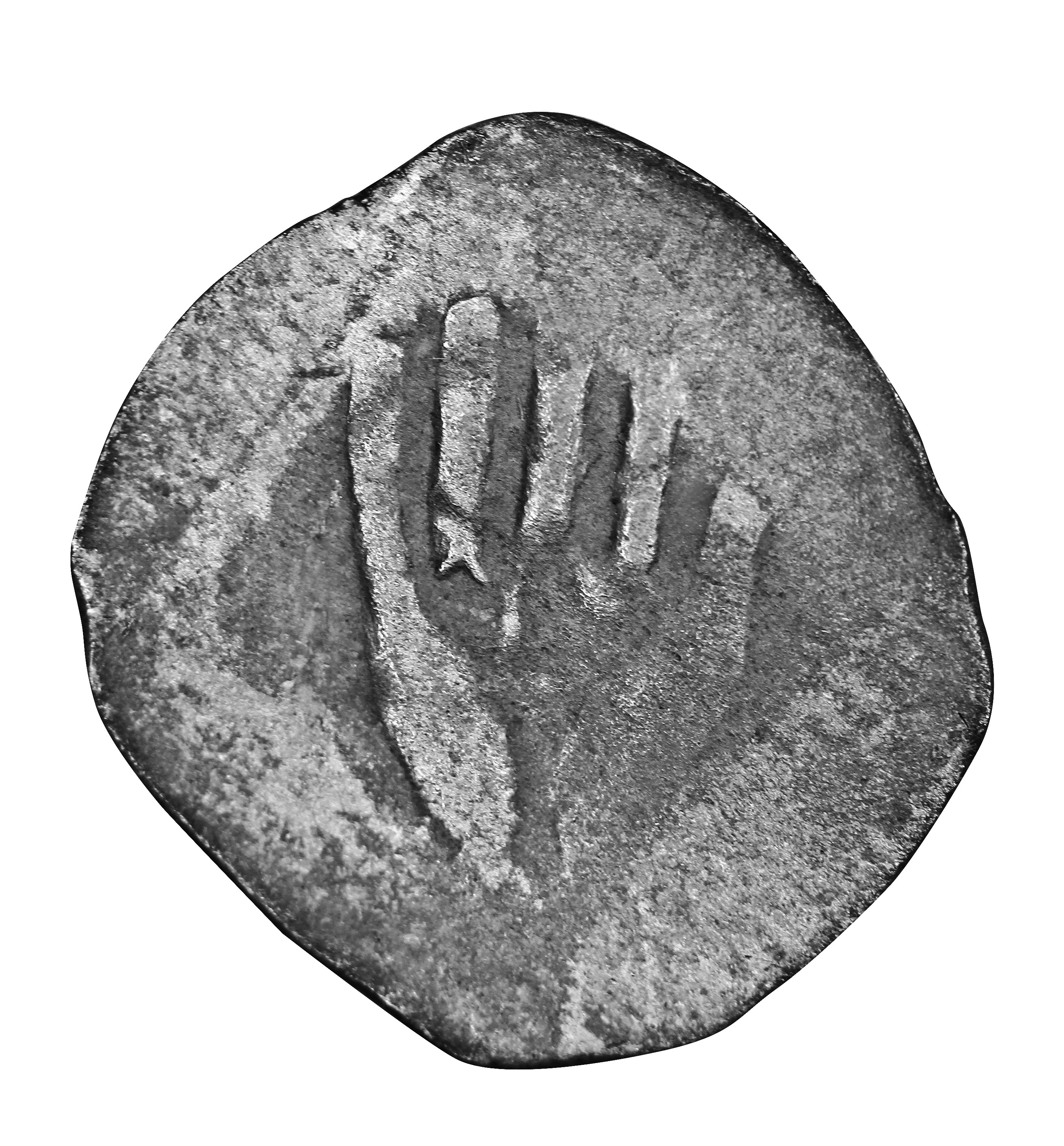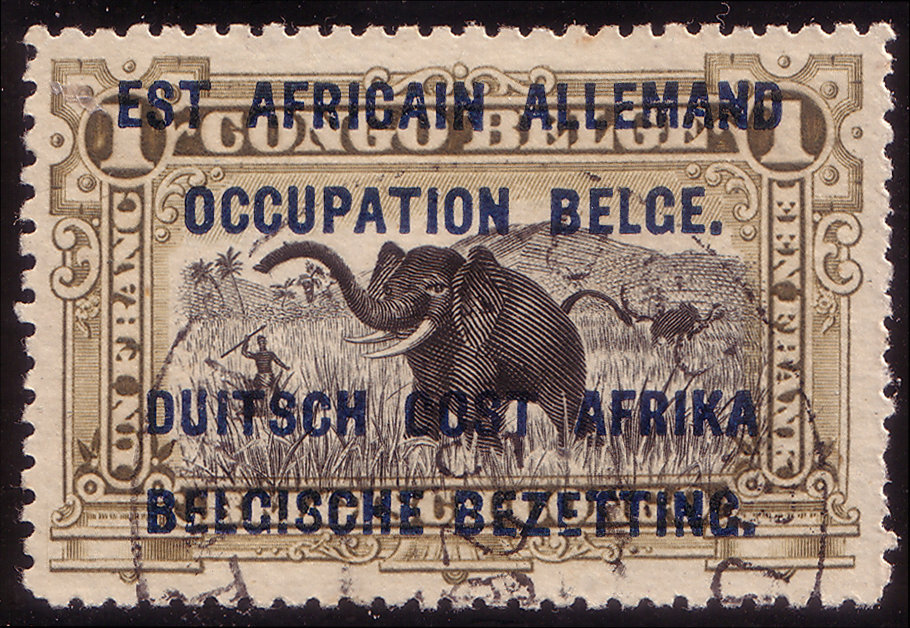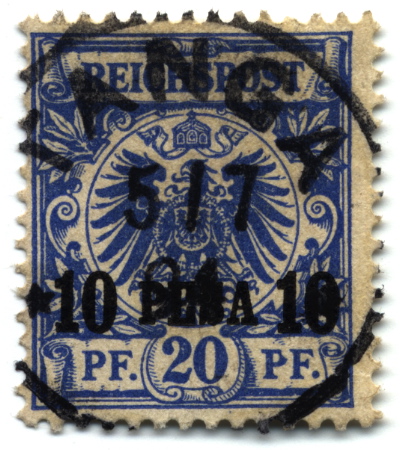|
Postage Stamps And Postal History Of German East Africa
This is a survey of the postage stamps and postal history of German East Africa. German East Africa was a German colony in East Africa, including what is now Burundi, Rwanda and Tanganyika (the mainland part of present Tanzania). It came into existence during the 1880s and ended during World War I, when the area was taken over by the British and Belgians, and later as League of Nations mandate territories. German postal agency A German postal agency was established on 27 February 1885 in Lamu using German stamps for mail. Following the Heligoland–Zanzibar Treaty in 1890 Germany created the colony of German East Africa. Initially German stamps were used. The first postage stamps for German East Africa were German stamps surcharged in pesa values in 1893, followed by stamps overprinted "Deutsch-Ostafrika" in 1896. In 1900, Germany issued the "Yachts," a common design used for all of Germany's colonies, featuring the Kaiser's yacht ''Hohenzollern''. In German East Africa th ... [...More Info...] [...Related Items...] OR: [Wikipedia] [Google] [Baidu] |
Postage Stamps
A postage stamp is a small piece of paper issued by a post office, postal administration, or other authorized vendors to customers who pay postage (the cost involved in moving, insuring, or registering mail), who then affix the stamp to the face or address-side of any item of mail—an envelope or other postal cover (e.g., packet, box, mailing cylinder)—that they wish to send. The item is then processed by the postal system, where a postmark or cancellation mark—in modern usage indicating date and point of origin of mailing—is applied to the stamp and its left and right sides to prevent its reuse. The item is then delivered to its addressee. Always featuring the name of the issuing nation (with the exception of the United Kingdom), a denomination of its value, and often an illustration of persons, events, institutions, or natural realities that symbolize the nation's traditions and values, every stamp is printed on a piece of usually rectangular, but sometimes triangular ... [...More Info...] [...Related Items...] OR: [Wikipedia] [Google] [Baidu] |
Heller (money)
The ''Heller'', abbreviation ''hlr'', was a coin, originally valued at half a pfennig, that was issued in Switzerland and states of the Holy Roman Empire, surviving in some European countries until the 20th century. It was first recorded in 1200 or 1208 or, according to Reiner Hausherr as early as 1189. The ''hellers'' were gradually so debased that they were no long silver coins. There were 576 ''hellers'' in a ''Reichsthaler'' ("imperial ''thaler''"). After the Second World War, ''hellers'' only survived in Czechoslovakia and Hungary. The ''heller'' also existed as a silver unit of weight equal to of a ''Mark''. Name The ''Heller'', also called the Haller or Häller (), in Latin sources: ''denarius hallensis'' or ''hallensis denarius'', took its name from the city of Hall am Kocher (today Schwäbisch Hall). Silver coins stamped on both sides (''Häller Pfennige'') were called ''Händelheller'' because they usually depicted a hand. A distinction was made between white, red ... [...More Info...] [...Related Items...] OR: [Wikipedia] [Google] [Baidu] |
Postage Stamps And Postal History Of Ruanda-Urundi
The African territories of Ruanda and Urundi came under Belgian control as Ruanda-Urundi after they were seized from Germany during World War I in 1916. They had previously formed part of German East Africa. The territory was under Belgian military occupation from 1916 to 1922, and stamps of Belgian Congo were overprinted for the occupied territories with bilingual inscriptions "EST AFRICAIN ALLEMAND OCCUPATION BELGE / DUITSCH OOST AFRIKA BELGISCHE BEZETTING" in French and Dutch. Ruanda-Urundi later became a Belgian-controlled Class B Mandate under the League of Nations from 1922 to 1945. Stamps of Belgian Congo overprinted "Ruanda-Urundi" were issued in 1924. The first series of definitive stamps featuring local themes was issued in 1931. The territory became a Trust Territory of the United Nations in 1946. Ruanda-Urundi gained independence in 1962 as two separate countries of Rwanda and Burundi Burundi (, ), officially the Republic of Burundi ( rn, Repuburika y’U ... [...More Info...] [...Related Items...] OR: [Wikipedia] [Google] [Baidu] |
Postage Stamps And Postal History Of The German Colonies
This is a survey of postage stamps and postal history of the German colonies and part of the postage stamps and postal history of Germany, as well as those of the individual countries and territories concerned. Overview With the establishment of a colonial empire by the newly unified Germany after 1871 and before the issuance of specific stamps inscribed with the name of the colony, definitive stamps of Germany were used. Only postally used stamps can be identified as having been used in the colony as the cancellation mark identifies the point of origin; these stamps are known as "Vorläufer" ( forerunner) stamps. By about 1897 provisional stamps came into use in the form of German definite stamps with overprints identifying the colony. By the end of 1900 and early 1901 the yacht issue was printed in Berlin and issued for each colony with its identifying inscription, initially without watermarks, and by 1905 and thereafter as a reissue with lozenges watermarks. German coloni ... [...More Info...] [...Related Items...] OR: [Wikipedia] [Google] [Baidu] |
SMS Königsberg (1905)
SMS ''Königsberg'' ("His Majesty's Ship ''Königsberg'') was the lead ship of her class of light cruisers built by the German ''Kaiserliche Marine'' (Imperial Navy)."SMS" stands for "''Seiner Majestät Schiff''" (german: link=no, His Majesty's Ship). Named after Königsberg,Now Kaliningrad, Russia. the capital of East Prussia, she was laid down in January 1905, launched in December of that year and completed by June 1906. Her class included three other ships: , , and . ''Königsberg'' was armed with a main battery of ten guns and had a top speed of . After her commissioning, ''Königsberg'' served with the High Seas Fleet's reconnaissance force. During this period, she frequently escorted Kaiser Wilhelm II's yacht on visits to foreign countries. In April 1914, the ship was sent on what was to have been a two-year deployment to German East Africa, but this was interrupted by the outbreak of World War I in August of that year. ''Königsberg'' initially attempted to raid Briti ... [...More Info...] [...Related Items...] OR: [Wikipedia] [Google] [Baidu] |
Light Cruiser
A light cruiser is a type of small or medium-sized warship. The term is a shortening of the phrase "light armored cruiser", describing a small ship that carried armor in the same way as an armored cruiser: a protective belt and deck. Prior to this smaller cruisers had been of the protected cruiser model, possessing armored decks only. While lighter and smaller than other contemporary ships they were still true cruisers, retaining the extended radius of action and self-sufficiency to act independently around the world. Through their history they served in a variety of roles, primarily as convoy escorts and destroyer command ships, but also as scouts and fleet support vessels for battle fleets. Origins and development The first small steam-powered cruisers were built for the British Royal Navy with HMS ''Mercury'' launched in 1878. Such second and third class protected cruisers evolved, gradually becoming faster, better armed and better protected. Germany took a lead in small c ... [...More Info...] [...Related Items...] OR: [Wikipedia] [Google] [Baidu] |
United Kingdom
The United Kingdom of Great Britain and Northern Ireland, commonly known as the United Kingdom (UK) or Britain, is a country in Europe, off the north-western coast of the European mainland, continental mainland. It comprises England, Scotland, Wales and Northern Ireland. The United Kingdom includes the island of Great Britain, the north-eastern part of the island of Ireland, and many List of islands of the United Kingdom, smaller islands within the British Isles. Northern Ireland shares Republic of Ireland–United Kingdom border, a land border with the Republic of Ireland; otherwise, the United Kingdom is surrounded by the Atlantic Ocean, the North Sea, the English Channel, the Celtic Sea and the Irish Sea. The total area of the United Kingdom is , with an estimated 2020 population of more than 67 million people. The United Kingdom has evolved from a series of annexations, unions and separations of constituent countries over several hundred years. The Treaty of Union between ... [...More Info...] [...Related Items...] OR: [Wikipedia] [Google] [Baidu] |
East Africa And Uganda Protectorates
East Africa and Uganda Protectorates was the name used by the combined mail, postal service of the Protectorate#British protectorates, British protectorates, British East Africa and Uganda Protectorate, Uganda, between 1 April 1903 and 22 July 1920. East Africa and Uganda Protectorates The administration issued postage stamps with the profile of Edward VII of the United Kingdom, King Edward VII and inscribed "EAST AFRICA AND UGANDA PROTECTORATES" in 1903. The same basic design was used throughout the period, with new watermark and colours in 1904 and 1907, respectively, and the substitution of George V of the United Kingdom, King George V in 1912. The 6c stamp was surcharged 4c in 1919. While the lower-denomination stamps are common, stamps of up to 500 rupees were sold, primarily for use as revenue stamps. Postal usages of the higher values are scarce and valuable. Kenya and Uganda On 23 July 1920 British East Africa became a Crown Colony of Kenya, with the exception of a coa ... [...More Info...] [...Related Items...] OR: [Wikipedia] [Google] [Baidu] |
Indian Army During World War I
The Indian Army during World War I was involved World War I. Over one million Indian troops served overseas, of whom 62,000 died and another 67,000 were wounded. In total at least 74,187 Indian soldiers died during the war. In World War I the Indian Army fought against the German Empire on the Western Front. At the First Battle of Ypres, Khudadad Khan became the first Indian to be awarded a Victoria Cross. Indian divisions were also sent to Egypt, Gallipoli, German East Africa and nearly 700,000 served in Mesopotamia against the Ottoman Empire. While some divisions were sent overseas others had to remain in India guarding the North West Frontier and on internal security and training duties. Field-Marshal Sir Claude Auchinleck, Commander-in-Chief of the Indian Army from 1942 asserted that the British "couldn't have come through both World War I and II if they hadn't had the Indian Army." Kitchener's reforms Herbert Kitchener was appointed Commander-in-Chief, India in 1902 an ... [...More Info...] [...Related Items...] OR: [Wikipedia] [Google] [Baidu] |
India IEF 1914 ScM34
India, officially the Republic of India (Hindi: ), is a country in South Asia. It is the seventh-largest country by area, the second-most populous country, and the most populous democracy in the world. Bounded by the Indian Ocean on the south, the Arabian Sea on the southwest, and the Bay of Bengal on the southeast, it shares land borders with Pakistan to the west; China, Nepal, and Bhutan to the north; and Bangladesh and Myanmar to the east. In the Indian Ocean, India is in the vicinity of Sri Lanka and the Maldives; its Andaman and Nicobar Islands share a maritime border with Thailand, Myanmar, and Indonesia. Modern humans arrived on the Indian subcontinent from Africa no later than 55,000 years ago., "Y-Chromosome and Mt-DNA data support the colonization of South Asia by modern humans originating in Africa. ... Coalescence dates for most non-European populations average to between 73–55 ka.", "Modern human beings—''Homo sapiens''—originated in Africa. Then, int ... [...More Info...] [...Related Items...] OR: [Wikipedia] [Google] [Baidu] |
Edward Northey (British Army Officer)
Major General Sir Edward Northey (28 May 1868 – 25 December 1953) was a senior British Army officer of the First World War who commanded a brigade on the Western Front until wounded in 1915. Returning to service in 1916, Northey took command of a colonial force in Nyasaland in the East African campaign, later becoming Governor of Kenya. He later served as a general of Territorial forces and retired in 1926. Birth and early career Edward Northey was born in 1868 at Cockerham, Lancashire and educated at Eton College and the Royal Military College, Sandhurst, being commissioned into the King's Royal Rifle Corps as a second lieutenant on 7 March 1888. He was promoted to lieutenant on 7 May 1890, and served in expeditions to Hazara and the Miranzai Valley in 1891 and one to Isazai the following year. Promotion to captain followed on 1 July 1895. From late 1899, Northey took part in the Second Boer War, remaining in South Africa until 1902. On his return, he was appointed adjuta ... [...More Info...] [...Related Items...] OR: [Wikipedia] [Google] [Baidu] |







